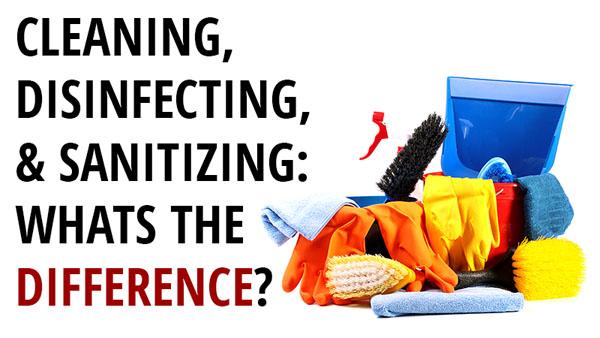It’s important to disinfect your home /workplace regularly to help prevent the spread of COVID-19. Here are the basics you need to know about disinfection
Know the Difference.
- Cleaning removes dust, debris and dirt from a surface by scrubbing, washing and rinsing.
- Sanitizing reduces the bacteria identified on the product’s label on surfaces and in laundry.
- Disinfecting destroys or inactivates both the bacteria and viruses identified on the product’s label (like influenza and rhinovirus) on hard, nonporous surfaces.
Disinfecting hard, nonporous surfaces is one of the most reliable ways to help lower the risk of spreading germs from surfaces by touch.
Why Disinfection Is Important.
Remember that you should disinfect – not sanitize – because disinfectants are the only products approved by the EPA to kill viruses on hard surfaces. The main difference is that EPA-approved sanitizers only have claims for bacteria, while disinfectants have claims against both bacteria and viruses.
When to Disinfect.
While in quarantine, it’s important to disinfect the hard, nonporous surfaces throughout your home at least 3 times per day. If someone in your household has COVID-19 or shows symptoms, disinfect the high-touch surfaces in the areas they enter as frequently as possible.
Select a Disinfectant That Can Be Effectively Used Against COVID-19.
To make sure your product is an EPA-approved disinfectant, look on the label for an EPA registration number on the back panel. You can select a product can be used against COVID-19 by visiting the US Environmental Protecion Agency Website- EPA’s site
How Freqently should facilities be cleaned
Routine cleaning is the everyday cleaning practices that businesses and communities normally use to maintain a healthy environment. Surfaces frequently touched by multiple people, such as door handles, bathroom surfaces, and handrails, should be cleaned with soap and water or another detergent at least daily when facilities are in use. More frequent cleaning and disinfection may be required based on level of use. For example, certain surfaces and objects in public spaces, such as shopping carts and point of sale keypads, should be cleaned and disinfected before each use. Cleaning removes dirt and impurities, including germs, from surfaces. Cleaning alone does not kill germs, but it reduces the number of germs on a surface.

